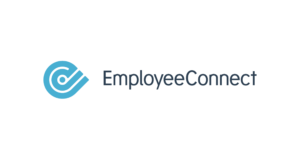
Streamlining Onboarding with HRIS: A Step-by-Step Guide
![]()
Employee onboarding is a critical process that sets the tone for an employee’s journey within a company. A well-executed onboarding process not only helps new hires integrate seamlessly into their roles but also contributes to overall employee satisfaction and retention. Human Resource Information Systems (HRIS) play a pivotal role in streamlining the onboarding process, offering a range of features to simplify and enhance the experience for both HR professionals and new employees.
Step 1: Centralised Data Collection
The first step in streamlining onboarding with HRIS is to centralise data collection. HRIS allows HR teams to gather and manage all necessary information from new hires in a centralised digital repository. From personal details and emergency contacts to tax forms and bank information, the HRIS acts as a one-stop solution for collecting and storing essential data securely.
This centralised approach eliminates the need for paper-based forms and manual data entry, reducing the likelihood of errors and ensuring that all information is easily accessible when needed. This not only saves time for HR professionals but also provides a smoother experience for new employees who can complete the necessary paperwork at their own pace through a user-friendly interface.
Step 2: Automated Workflows
One of the key advantages of HRIS in the onboarding process is the ability to automate workflows. Once the initial data is collected, HRIS can trigger automated workflows that guide new hires through the onboarding steps systematically. This includes sending welcome emails, assigning online training modules, and scheduling introductory meetings with team members.
Automation not only accelerates the onboarding timeline but also ensures consistency in the process. HRIS can be configured to send reminders for pending tasks, reducing the likelihood of delays and keeping both HR professionals and new employees on track.
Step 3: Electronic Document Management
Say goodbye to the hassle of managing physical paperwork during the onboarding process. HRIS facilitates electronic document management, allowing new hires to digitally sign and submit important documents. This not only accelerates the onboarding timeline but also contributes to a more environmentally friendly and sustainable approach.
From employment contracts and confidentiality agreements to employee handbooks, all documents can be securely stored within the HRIS. This ensures that both HR professionals and new hires have easy access to the necessary documents at any time. Additionally, it simplifies the compliance aspect of onboarding by providing a digital trail of signed documents.
Step 4: Customised Onboarding Plans
Every role within a company is unique, and so should be the onboarding process. HRIS enables the creation of customised onboarding plans tailored to specific roles and departments. This ensures that new hires receive relevant information and training based on their job requirements.
Customised onboarding plans contribute to a more personalised and engaging onboarding experience. HRIS allows HR professionals to incorporate multimedia elements such as videos and interactive modules into the onboarding process, making it more informative and enjoyable for new employees.
Step 5: Integration with Other Systems
A seamless onboarding experience involves integration with other business systems, such as payroll, benefits administration, and employee directories. HRIS can be configured to integrate with these systems, ensuring that data is synchronised across the organisation.
Integration eliminates the need for manual data entry into multiple systems, reducing the risk of errors and ensuring consistency of information. This not only streamlines the onboarding process but also sets the foundation for a more efficient and connected HR ecosystem.
Step 6: Real-time Communication and Feedback
Communication is key during the onboarding process, and HRIS facilitates real-time communication between HR professionals and new hires. Whether through chat features, discussion forums, or dedicated onboarding portals, HRIS provides a platform for instant communication.
Furthermore, HRIS allows for continuous feedback loops, enabling HR professionals to gather insights on the onboarding experience. This data can be valuable for refining and improving the onboarding process over time, ensuring that it remains effective and aligned with the evolving needs of the organisation.
In conclusion, streamlining onboarding with HRIS is not just about efficiency; it’s about creating a positive and memorable experience for new employees. By centralising data, automating workflows, embracing electronic document management, customising onboarding plans, integrating with other systems, and facilitating real-time communication, HRIS becomes an indispensable tool in shaping a successful onboarding journey. As organizations continue to prioritise employee experience, leveraging HRIS for onboarding is a strategic investment that pays off in improved productivity, engagement, and retention.

![]()
For more relevant posts
The HR Landscape in 2024: The Vocal Point of Data Security and Privacy
